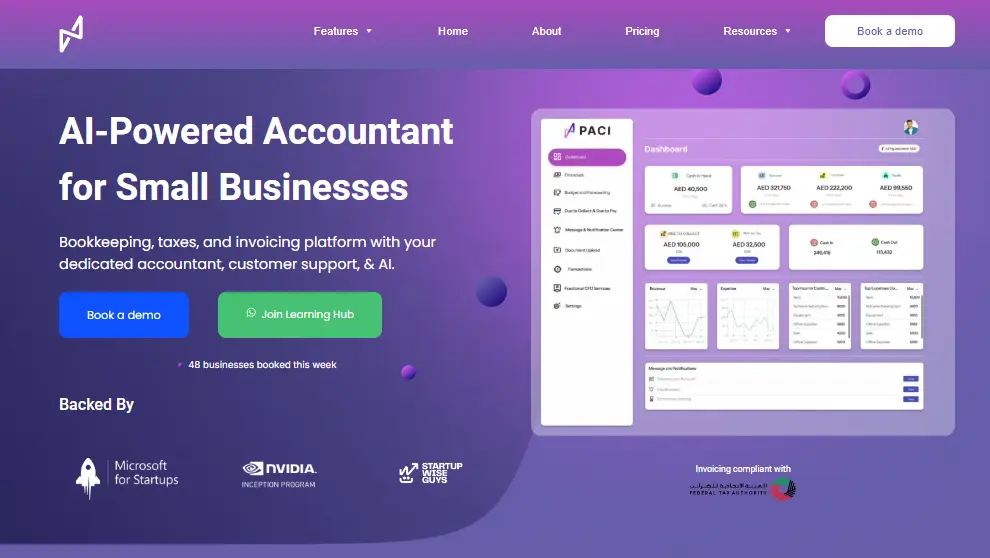6 Simple Steps to Create a Business Budget for Your Small Business

Developing a business budget is an essential first step for small business entrepreneurs. It’s more than simply figures. It’s about guiding your company, comprehending your financial situation, and making plans.
A well-organized business budget enables you to monitor sales, manage costs, and guarantee profitability.
A business budget shows your projected income and outlays for a given time frame, usually a year. It aids in resource allocation, goal-setting, and progress tracking.
Small enterprises must have a well-defined budget to navigate the frequently uncertain financial situation.
We will walk you through a quick and easy process for creating a business budget that works for your small business.
Now let’s discover the six essential steps to get you going!
Why Every Small Business Needs a Budget
A well-crafted budget can help small business owners monitor their cash flow, spot possible dangers, and cut costs.
It acts as a financial blueprint, detailing your income sources and how you will use them.
Businesses frequently find it difficult to remain stable without this structure, particularly during unpredictable times.
How Business Growth Is Affected by Budgeting
Budgeting helps businesses foresee and create achievable financial targets. By strategically allocating finances, companies may spend on growth areas like marketing, product development, or recruiting new employees.
Additionally, it facilitates strategic decision-making by enabling firm owners to change strategy or make investments in response to financial results.
A Small Business Administration study indicates that companies with a healthy budget have a higher chance of long-term success and sustainable growth.
Simple 6 Steps to Create a Solid Business Budget
This section will highlight the simple six steps to develop a business budget.
Before moving onto it, get to know about the Free business budget management template for Small Businesses.
Download your Free Business Budget Management Template Here.
Step 1: Assess Your Current Financial Situation
Knowing your finances is the first step in creating a business budget. First, collect all of your financial statements, including balance sheets, cash flow statements, and income statements. These records give a clear picture of your company’s financial situation.
Next, classify your expenses and determine your revenue streams, including sales, services, and other sources of money. This covers variable expenditures like marketing or supplies and fixed costs like rent, salaries, and utilities. You may create a reasonable budget foundation by dividing your income and expenses.
Step 2: Set Realistic Financial Goals
After evaluating your financial status, the next critical step is establishing attainable financial targets for your company. These objectives serve as a road map to assist you in making economic decisions.
Make a distinction between your long-term and short-term goals first.
A few examples of short-term objectives are raising monthly cash flow, clearing particular debts, or setting aside funds for a forthcoming project. Examples of long-term objectives are buying new machinery, growing the company, or breaking into unexplored markets.
These objectives must be in line with your overall business plan.
If your strategy calls for quick expansion, your budget should include expenditures on product development, hiring, and marketing.
Establishing attainable goals helps you stay on task and track your development, guaranteeing that your budget aligns with your company’s mission.
Step 3: Identify Fixed and Variable Expenses
When creating a business budget, it is critical to be in-depthly aware of your fixed and variable costs. This enables more effective resource allocation and precise cost prediction.
Determine your fixed expenses first. These are ongoing expenses that are the same every month. These might consist of insurance, salary, rent, and subscription services. A comprehensive understanding of these makes it easier to guarantee that your essential costs are constantly met.
Estimate your variable expenses after that. These expenses change according to what you do for a living. Utility bills, raw materials, transportation, and marketing expenses are a few examples.
Since variable expenses can vary, it’s critical to maintain flexibility within your spending plan to account for spikes in demand or unanticipated expenses.
Maintaining a balance between fixed and variable costs helps your organization stay flexible and change with the times without going over budget.
Step 4: Create a Cash Flow Forecast
Realizing the details of your company’s financial flow is one of the most significant elements of an effective business budget.
A cash flow projection assists you in monitoring your inflows (loans, investments, and revenue) and outflows (expenses, taxes, and loan payments) over a given time period.
By projecting your future cash flows, you can spot any gaps where your costs may exceed your income. You may plan with this projection and guarantee you always have enough cash to cover unforeseen expenses or slowdowns in business activity.
Accurate forecasting is crucial for small businesses where cash flow can be limited.
If you can forecast and monitor your cash flow more precisely, your company will be more adaptable and ready to face obstacles and development opportunities.
Download your Cash Flow Statement Template here
For example, you’ll need to adjust your budget to account for changes in business growth or slower times. This can include reducing operational expenses or raising Also read: 6 rules for managing small business cash flow!
Step 5: Regularly Review and Adjust Your Budget
Making a business budget is a continuous process. Regular assessments are vital to ensure that the budget is in line with realistic company performance.
It’s critical to monitor the differences between your actual revenue and expenses and the amounts you had budgeted for.
Do you find yourself going over budget? Is your pay not what you expected? These insights can help you make the required changes.
your marketing spend during growth when income declines.
Maintaining flexibility and making informed choices is essential to keep your firm on track.
Step 6: Leverage AI-Powered Solutions for Efficiency
Although creating a business budget can take time, AI-powered solutions can speed up the process.
At Paci.ai, we combine human knowledge with state-of-the-art AI technology to eliminate errors, reduce manual labor, and automate budgeting activities. By automating data gathering, financial estimates, and reporting, our financial experts save you time and guarantee reliability in your budgeting process.

Businesses may make smarter decisions using our platform to assess financial data and project future spending quickly.
Additionally, you can stay on target by adjusting your budget using AI-driven insights based on real-time data. This implies that small business owners should spend more time concentrating on growth and less time calculating numbers.
We help you to get:
- Customized insights and Financial advisory
- AI-Powered Automated Finance
- Seamless receivable payable management
- Effective Coordination
- Bookkeeping tax suite
- Real-time communication channel
- Real-time financial dashboard
- Easy transaction management
Final Thoughts
A strong business budget is essential for small businesses to be financially stable and expand.
You may efficiently manage your business’s finances by adhering to these six steps:
- Evaluating your present financial status
- Establishing reasonable goals
- Identifying expenses
- Projecting cash flow
- Routinely reviewing your budget
- Utilizing AI-powered tools
With Paci.ai‘s assistance, these tasks may be automated even more effectively, giving you the confidence to concentrate on growing your company.
Connect with us for more financial insights and knowledge.



